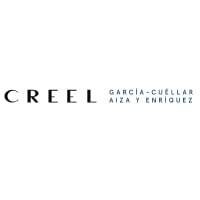

Legal and compliance director | Thor Urbana



Diego Nogueira Lomelín
Legal and compliance director | Thor Urbana
Team size: 12
How do you approach managing legal aspects during periods of instability or crises, and how does your legal strategy align with the broader business strategy to ensure the organisation’s resilience?
During periods of instability – whether caused by regulatory change, market pressure, or disruption at the project level – our legal strategy is built around three priorities: anticipation, flexibility, and alignment with the business. Rather than waiting for issues to escalate, we run contractual and structural stress tests in advance, identifying exposure points, termination triggers, and obligations that could turn into operational or financial risks. That allows us to enter a crisis with a clear map of scenarios rather than reacting under uncertainty.
At the same time, we try to structure agreements that preserve optionality for the company. That may take the form of flexible exit mechanics, performance-based fee schemes, or conditional capital commitments that protect liquidity. The goal is not just legal protection but ensuring that management retains room to manoeuvre when external conditions shift. Legal work adds value when it creates choices, not just safeguards.
Finally, we work as part of the core business decision-making process. Our team sits alongside Investments, Asset Management, Capital Markets, Finance and Development, so legal strategy is shaped with full visibility into commercial objectives, timing pressures, and stakeholder expectations. In a crisis, that proximity allows the legal function to act as a coordination hub – translating uncertainty into defined risk categories and clear next steps. For us, resilience is built on legal clarity that enables faster decisions, not slower ones.
What are the major cases or transactions you have been involved in recently?
One of the most complex transactions we have handled recently is the acquisition and legal structuring of Caye Chapel, a luxury hospitality and real estate development in Belize. The deal required a multi-layered structure involving share purchase agreements, asset purchase agreements, security instruments, and an escrow trust designed to retain part of the purchase price and secure post-closing indemnification obligations. Because the project involved multiple sellers, lenders, government approvals, and cross-border regulatory and tax considerations, the main challenge was not drafting, but coordinating timing, risk allocation, and operational conditions across different jurisdictions. The legal work continues today through the development phase, where we are now handling operator, construction, and regulatory matters.
How do you prioritise diversity and inclusion within your legal department, and what initiatives have you implemented to foster a more inclusive and equitable work environment?
We take diversity and inclusion seriously because we have seen that legal teams are stronger when they reflect a range of backgrounds, perspectives, and problem-solving approaches. Our focus has been on making inclusion part of our processes rather than a standalone policy. Recruiting and promotion are based on skills and potential rather than traditional career patterns; we rotate responsibilities so everyone has access to high-visibility work, and we make sure junior lawyers participate directly in negotiations and external counsel management. We do not claim to have solved diversity, but we are intentional about it and treat it as a competency, not a slogan.